
Distances in the solar system are great.
- Subject:
- Science
- Provider:
- Utah Education Network
- Author:
- Visual Learning Company
- Date Added:
- 02/28/2010

Distances in the solar system are great.
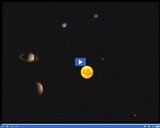
The sun is the center of the solar system around which Earth, the other plants, and their moons revolve. Inertia causes planets to remain in motion. The pull of gravity between the sun and planets keeps the planets from flying off into space.
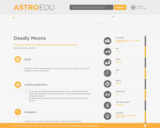
From Earth’s moon to Europa, our solar system is filled with interesting set of natural satellites. Through art and science, children learn about moons of our solar system with the Deadly Moons activity.
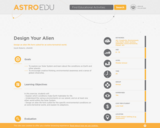
Review the environmental factors that make the Earth habitable and compare them to other worlds within our Solar System. Use creative thinking to design an alien life form suited for specific environmental conditions on an extra-terrestrial world within our Solar System.

This interactive activity from the Adler Planetarium explains the reasons for the seasons. Featured is a game in which Earth must be properly placed in its orbit in order to send Max, the host, to different parts of the world during particular seasons.
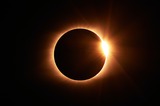
Students will learn about interactions between objects in the solar system that influence phenomena observed from Earth. This includes both solar and lunar eclipses. They will develop and use a model of the Sun-Earth-Moon system to describe the eclipses of the Sun and Moon.
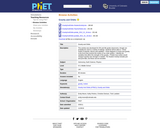
This activity was developed for6th grade classrooms studying the Solar System, though can probably be used in a variety of settings. Students will be able to: • Draw motion of planets, Moons and satellites. • Draw diagrams to show how gravity is the force that controls the motion of our solar system. • Identify the variables that affect the strength of the gravity. • Predict how motion would change if gravity was stronger or weaker. The Student Activity includes pre- and post-labs, but these can be excluded.
Standard 6.1.2 Develop and use a model to describe the role of gravity and inertia in orbital motions of objects in our solar system.
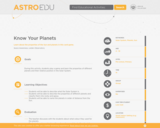
Play a question and answer card game on the solar system and learn about the properties of the Sun and its planets.
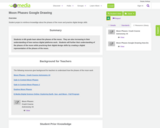
Student project to reinforce knoweldge about the phases of the moon and practice digital design skills
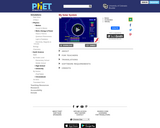
Build your own system of heavenly bodies and watch the gravitational ballet. With this orbit simulator, you can set initial positions, velocities, and masses of 2, 3, or 4 bodies, and then see them orbit each other.

Let the StoryBots DJ "revolve" it with sweet beats as the rapping sun and planets give you their spin on the whole solar system.

This is a lesson plan designed to teach the phases of the moon to sixth grade students. They will use IPADS to create a presentation to show their undestanding. They should be able to identify all the phases of the moon and their order. (Picture taken by my son Max)
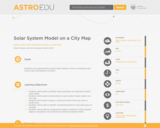
This activity is based on a reduced-scale model of the Solar System built on a map of a city students are familiar with. This provides them with an understanding of the great distances between the different bodies of the Solar System and their relative size. Students will investigate the characteristics that are required from these bodies to build a scale model using common objects.
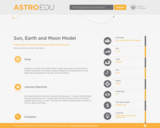
Students build a model of the Sun-Earth-Moon system, exploring how the Moon revolves around the Earth, and the Earth around the Sun. Students play a memory game and learn some characteristics about the three objects.

In this video from the Science and Technology Chat series, learn about astrobiology, an interdisciplinary field that uses biology, astronomy, and geology to study the origins of life on Earth and to search for possible life on other planets.

In this animated video segment adapted from NASA, astronomer Doris Daou explains how the forces of speed and gravity keep the Moon in a constant orbit around Earth.